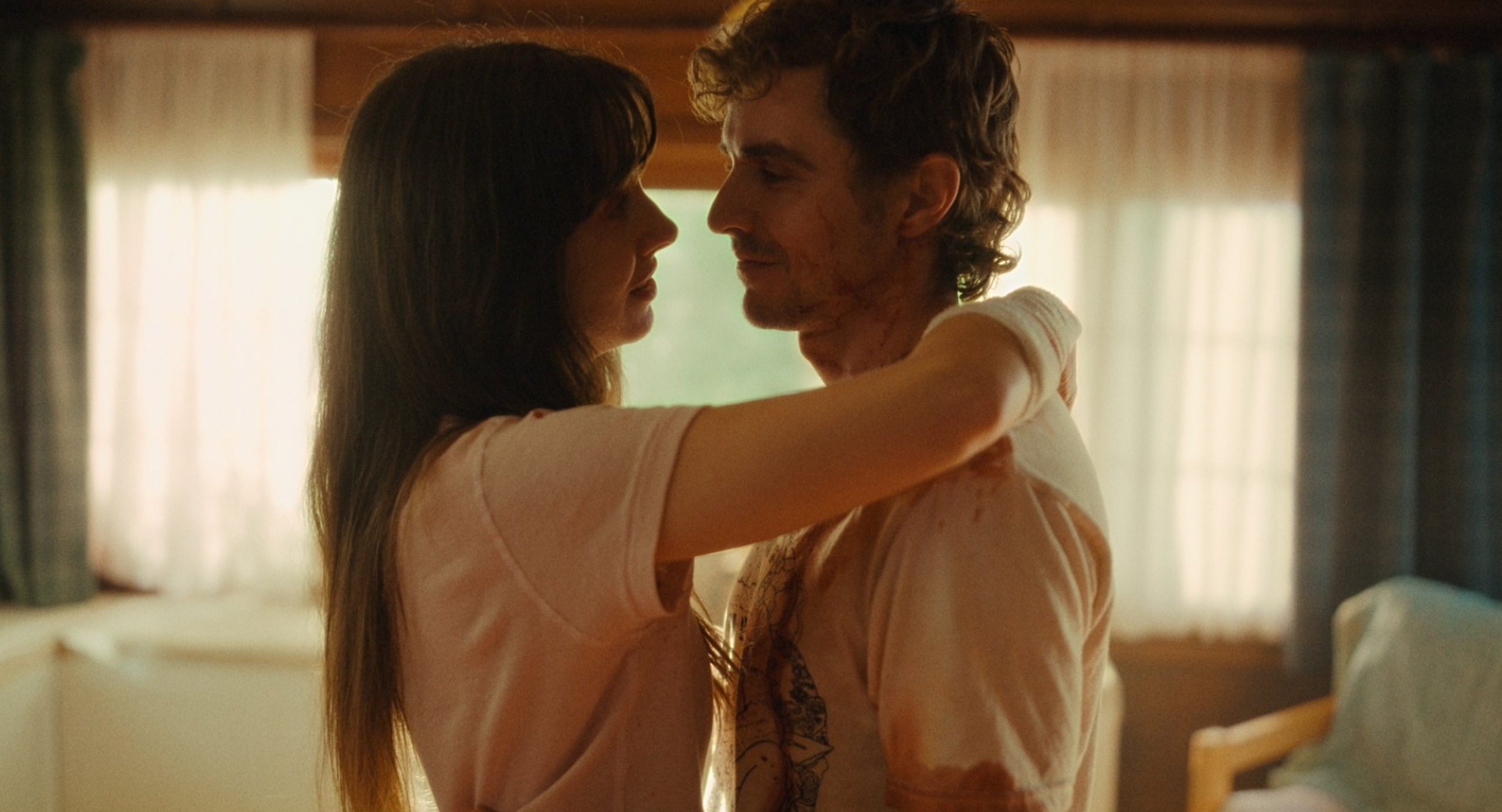Together – Film Review
Published July 30, 2025

Michael Shanks makes an ambitious and unsettling directorial debut with Together, a supernatural body horror film that fuses relationship drama with deeply visceral imagery. Starring real-life couple Dave Franco and Alison Brie, the film explores intimacy, codependency, and the terrifying consequences of emotional enmeshment through the lens of disturbing physical transformation. While it doesn’t always manage to balance its metaphors with its genre thrills, Together is a daring and original horror film that sticks—sometimes literally—in the memory.
Is this a horror story, or is it perhaps the other way around? Shanks tells the story of Millie (Brie), a newly hired schoolteacher, and Tim (Franco), a struggling musician, who relocate to a sleepy countryside village in search of peace and stability. Their bond is already under strain—Millie is ready to commit, Tim hesitates—and a mysterious cave accident during a rainstorm exacerbates the tension. From that point onward, their bodies begin betraying them, drawing them together with frightening and increasingly grotesque results.
The supernatural body horror elements—a nod to films like The Fly or Possession—are heavily metaphorical. Shanks uses physical fusion as a stand-in for emotional and romantic co-dependence. It’s a striking metaphor for a couple struggling to redefine their connection, especially as they move away from familiar environments and face unresolved tension. The horror is not just in the fusion of limbs and flesh, but in the sense of losing one’s individuality to preserve a failing relationship.
Dave Franco and Alison Brie bring an undeniable authenticity to their roles. Their real-life chemistry makes the early stretches of the film feel grounded and sincere, even when the story veers into deeply bizarre territory. Franco delivers a subtle performance as Tim, whose reluctance to commit masks a deeper fear of vulnerability. Brie, meanwhile, shines as Millie, channeling frustration, longing, and resilience in equal measure. Her emotional arc gives the film its heart, even as her character undergoes literal body horror.
Damon Herriman also deserves mention for his eerie and unsettling performance as Jamie, the couple’s mysterious neighbor. Herriman plays Jamie with a disarming calmness that gives way to something deeply off-putting, making him a compelling (and symbolic) presence in the story. His character ultimately functions as both a narrative catalyst and a thematic reflection of the path the couple could take.
Together is an impressive movie to look at as well, especially for a debut feature. Shanks and cinematographer Germain McMicking craft a picturesque countryside that contrasts beautifully with the visceral horror unfolding within it. The lush greens of the woods and the soft light of Millie’s new school clash with the increasingly dark, damp, and claustrophobic interiors of the couple’s home and the cave.
The practical effects are particularly noteworthy. The bodily transformations are rendered with an icky, tactile realism that’s both revolting and fascinating to watch. Flesh melds with flesh, and limbs twist in unnatural configurations, reminiscent of Cronenberg’s early work. Yet the film doesn’t rely solely on shock value—the horror always serves the story, heightening the emotional stakes and amplifying the underlying themes of love, fear, and interdependence.
Complementing the visuals is a haunting and melancholic score by Cornel Wilczek, which blends string motifs with ambient dread. The music accentuates the escalating tension without overwhelming it, and moments of silence are used just as effectively. The film’s final scene, which is quite haunting to say the least, is a prime example of Shanks’ ability to craft moments that are as emotionally resonant as they are horrifying.
Where Together falters is in its pacing and thematic clarity. The first half, which focuses on the couple’s move and initial adjustment, takes its time establishing the stakes—perhaps a bit too much. The horror elements are slow to emerge, and while the character development is appreciated, the film risks losing the audience’s attention before the supernatural elements fully kick in.
When the horror does arrive, it’s effectively grotesque but can occasionally feel repetitive. The couple’s recurring fusions and separations play out in variations that, while thematically justified, begin to blur together. Shanks wants to explore the cyclical nature of unhealthy attachment, but some viewers may find the metaphor growing thin by the third act.
Additionally, the film’s commitment to ambiguity—especially in its finale—will divide audiences. While some may find the ending poignant and open to interpretation, others might crave more concrete answers about the supernatural mechanics or the lore surrounding the cave. That said, the film’s refusal to over-explain is also part of its charm. It retains an eerie, dreamlike quality that lingers long after the credits roll.
Despite its imperfections, Together succeeds in offering something unique in the horror landscape. It isn’t just about shock or spectacle—although it certainly has its share of both—but about how deeply human fears can be expressed through monstrous forms. The film examines the fear of being consumed by love, of losing one’s individuality in a partnership, and of holding onto something past the point of healing.
Michael Shanks demonstrates a sharp eye for metaphor and an ability to weave emotional vulnerability into genre trappings. His direction feels confident, even when the script wavers. With the help of committed performances from Franco and Brie, he crafts a story that’s both repulsive and deeply moving.
Together is a challenging and inventive debut that uses the grotesque to explore the deeply personal. While not all of its ideas fully cohere and the pacing may try viewers’ patience, its originality and emotional depth make it a memorable entry in the body horror canon. It’s the kind of film that dares you to look away, but rewards you for staying with it.
